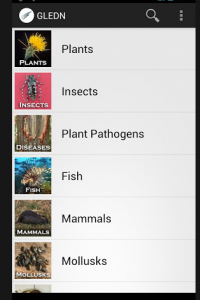COLUMBUS — Now there’s a new tool for fighting alien invasions. Your smartphone.
Ohio State University Extension has released a new app for spotting and tracking invasive species — non-native organisms such as Asian carps, purple loosestrife and Asian longhorned beetle — to try to keep them from setting up beachheads and hurting the economy and environment.
How to use it

“Early detection gives us a greater chance of being able to handle infestations before they become so large that eradicating them isn’t possible or feasible,” said Kathy Smith, forestry program director for Ohio State University Extension and a co-developer of the app.
Data submitted by the app’s users goes into the web-based Early Detection and Distribution Mapping System, which tracks the location and spread of invasive species throughout the U.S. and Canada. The app divides sightings into the general categories of plants (including trees, vines, shrubs, herbs, grasses and forbs such as wildflowers), fish, insects, mammals, mollusks, crustaceans and plant diseases.
Coverage area
The network covers the states of Ohio, New York, Illinois, Indiana, Wisconsin, Michigan, Minnesota and Pennsylvania. Aliens in the region already include cheatgrass, Chinaberry, round goby, garlic-mustard, tree-of-heaven, purple loosestrife, spiny water flea, emerald ash borer, hemlock woolly adelgid, Eurasian water milfoil, and zebra and quagga mussels.
Meanwhile, Asian carps, which are more than one species, including silver carp and bighead carp, are close to but not in the Great Lakes themselves yet. Scientists say the fishes’ impact on the lakes could be devastating.
Losses
The non-native emerald ash borer insect, for its part, has killed tens of millions of native ash trees throughout the eastern U.S. and Canada, has caused tens of millions of dollars in losses, and could wipe out every native ash in North America, according to a joint website by the U.S. Forest Service and several universities.
“Our native ecosystems are impacted in a variety of ways by non-native invasive species,” Smith said. “Early detection gives scientists time to explore some of the unknowns about a species and come up with strategies for dealing with an infestation.”
Android users can download the app by going to http://go.osu.edu/GLEDN and following the link to Google Play. An iPhone version is coming soon. The app’s co-developers also included Eugene Braig, Marne Titchenell and Amy Stone, all of OSU Extension, and Chuck Bargeron of the University of Georgia’s Center for Invasive Species and Ecosystem Health.











